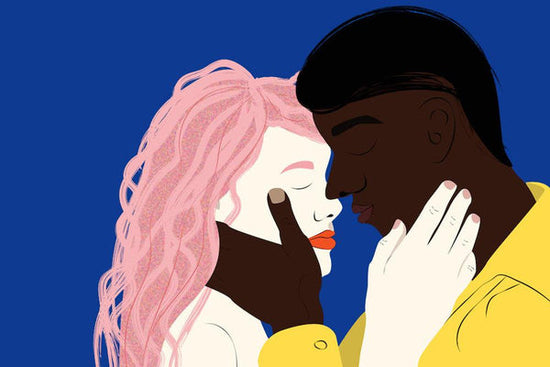
Schizophrenia in the media: depictions of Jekyll or Hyde
Misrepresentation of schizophrenia in the media continues unabated with people with schizophrenia are still portrayed as dangerous and unpredictable, and these perceptions have increased in recent years. | Photo ©master1305 / Adobe Stock
Misrepresentation of schizophrenia in the media
Studies indicate that the bulk of most people's knowledge about schizophrenia comes from the newspapers they read, the television shows they watch, and the movies they see. Research also tells us that most media portrayals of schizophrenia are stereotypical, harmful, or wrong. This means many people gain an inaccurate or unfavorable view of those with psychological disorders simply by skimming a few sentences in the newspaper or picking up a remote control. And this reinforces the stigma of schizophrenia.
Research shows depictions of schizophrenia in the media are often associated with violence, which reinforces the stigma of schizophrenia.
Stigma can take a heavy toll on people who suffer from mental illness. Being shunned, feared, devalued, and discriminated against can impair recovery and deepen social isolation and distress. Many people with schizophrenia judge stigma to be more difficult to cope with than the symptoms of their illness.
Thankfully, there are grounds for hope. Australian researchers have shown that
mental illness stigma, such as the unwillingness to interact with affected people, generally declined from 2003 to 2011. Some credit for this improvement must go to media campaigns by beyondblue and SANE, and to the willingness of many people to speak publicly about experiences that would once have been shamefully private.
The dark cloud inside this silver lining is schizophrenia, a serious condition that impairs thinking, emotion and motivation. While Australians’ attitudes towards depression have become more accepting, the stigma of schizophrenia has remained largely unchanged.
Read more: Stop saying 'Crazy woman'
Given the misrepresentation of schizophrenia in the media, it’s hardly surprising that the public’s views of the condition continue to be laced with fear and loathing
Depictions of schizophrenia in media: misusing and misunderstanding
People with schizophrenia are still perceived as dangerous and unpredictable, which has increased in recent years. Attitudes to people with schizophrenia have also worsened in the United States at the same time as attitudes to depressed people have improved.
Just as the media can take some credit for the declining stigma of other conditions, it must take some blame for the continuing stigma of schizophrenia. Media portrayals commonly associate it with violence and danger.
Schizophrenia in the media is often misused to refer to split personality or incoherence. This Jekyll-and-Hyde misconception persists despite countless corrections.
For instance, one study in an Italian newspaper found that the term schizophrenia was employed almost three times as often used incorrectly to refer to people with the diagnosis of their mental illness.
But just how negative are the depictions of schizophrenia in the media?
My students and I recently examined this question in a study that we published in the academic journal Psychosis. We located every story published in major national, state, and territory online and print news media outlets in the year ending August 2012 that cited schizophrenic or schizophrenia in the media.
We then counted how many stories misused these terms and coded how often the condition was linked to violence or presented in a stigmatizing way.
Our results were striking. Almost half (47%) of stories linked schizophrenia to some form of violence, and 28% of these associated it with attempted or completed homicide. The schizophrenic person was identified as a perpetrator of violence six times more frequently than as its victim. Schizophrenia in the media was misused as a split metaphor in 13% of stories. And fully 46% of stories were coded as stigmatizing.
Given the misrepresentation of schizophrenia in the media, it’s hardly surprising that the public’s views of the condition continue to be laced with fear and loathing if they usually find schizophrenia presented in the context of violent aggression or as a metaphor for internal contradiction.
Schizophrenia in the media is often misused to refer to split personality or incoherence.
Better ways to portray schizophrenia in the media
What can be done about the misrepresentation of schizophrenia in the media? For one thing, journalists and the general public need to become aware that schizophrenia doesn’t mean a split personality and bears no resemblance to caricatures of craziness. This mistaken usage should be retired not because the police say it’s offensive but because it perpetuates a misunderstanding that hurts real people.
Read more: why is dissociative identity disorder controversial
Journalists and editors also need to think carefully before linking schizophrenia to violent behavior. Often the proposed link is dubious and speculative and adds nothing important to the story. Just as violence supposedly committed by people experiencing mental illness is over-reported – producing an exaggerated sense of their dangerousness – their victimization is often under-reported.
An equally important corrective would be to publish more stories that feature people with schizophrenia living well, present their everyday struggles and adversities or showcase promising treatments and research findings.
The coverage of schizophrenia in the media can be improved. Our study found that stories from broadsheet newspapers were less stigmatizing than tabloid stories, and longer, more developed stories were less stigmatizing than briefer ones.
This is not a matter of white-washing the news. People with schizophrenia are at a somewhat increased risk of committing violent offenses (and being their victims). They can behave in challenging ways. But the media landscape that our study surveyed is so tilted towards depicting schizophrenia as dangerous that it’s seriously unbalanced. Journalists and editors can do better and depicting schizophrenia in the media; if they do, the stigma of schizophrenia may start to erode.
Schizophrenia in the media: depictions of Jekyll or Hyde is republished from The Conversation under a Creative Commons license.










